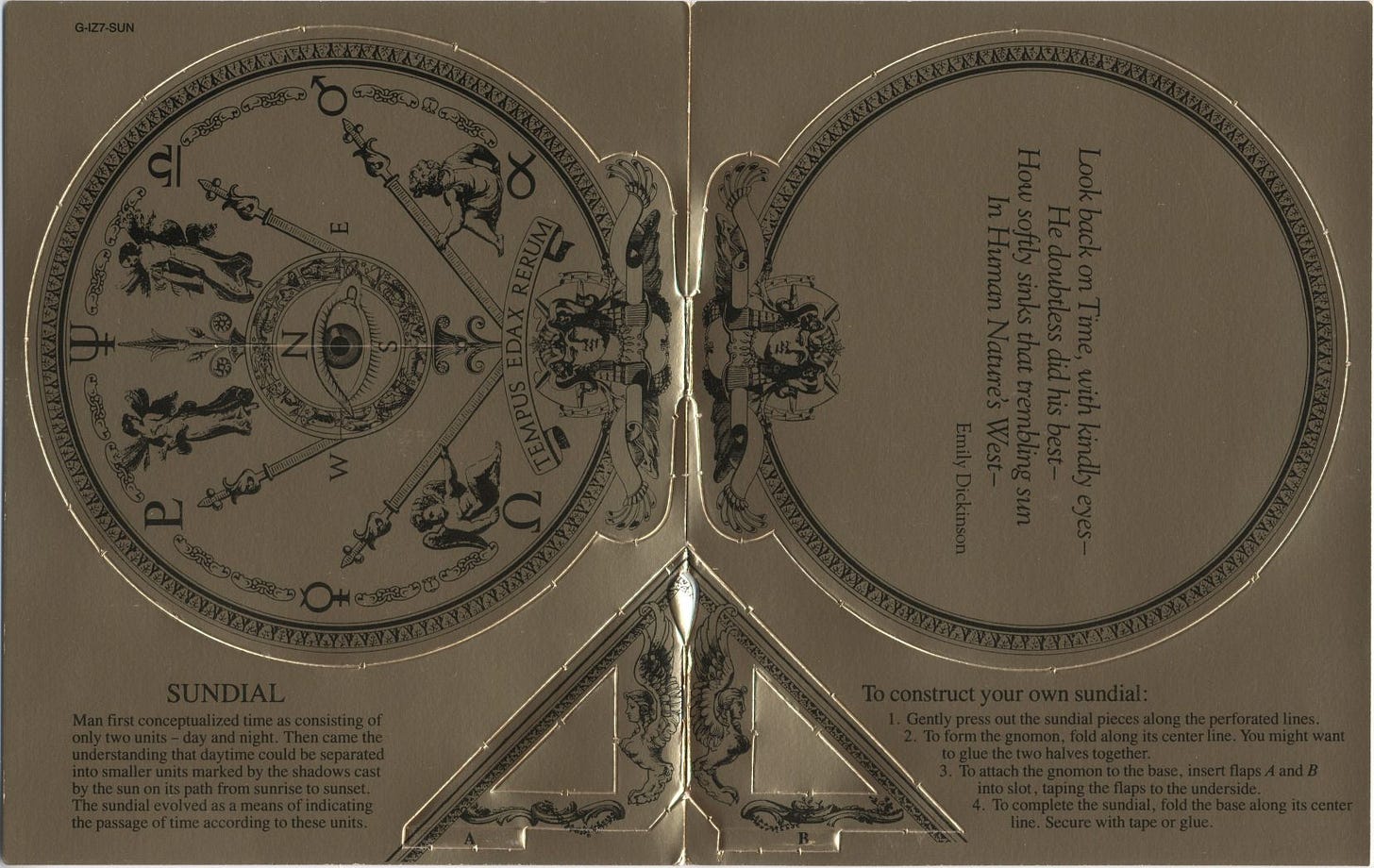The Classic PC Gaming Era (1977-1989) - Trinity
A poetic examination of the nuclear age that’s often regarded as one of the best adventure games of all time
RELEASE DATE: 1986
DEVELOPER / PUBLISHER: Infocom
REPLAYABILITY: Fairly playable
Adventure games of the 1980s developed a well-earned reputation for being largely illogical collections of challenging puzzles with light theming, and despite all of Infocom’s attempts to elevate the genre into their preferred term of “interactive fiction,” the frustrating aspects of dealing with limited parsers, confusing maps and bewildering items turned many players off the genre entirely over time. Text-based adventures were already feeling a little bit long in the tooth by the mid-1980s, and some might argue that Brian Moriarty took the genre to its limits with the fantastic and poetic adventure Trinity, which sought to explore the psyche of a society living under the threat of nuclear annihilation by exploring the horrific moment when the bombs might begin dropping. This setup leads to a time-travel tale that is equal parts metaphor for a nuclear-capable society and exploration of the origins of nuclear weaponry.
The game begins innocently enough with a vacation in London where you are able to explore the Kensington Gardens area and experience a few familiar sights before a Soviet nuclear missile appears on the horizon. If you’re able to solve a few initial puzzles, you enter a doorway to an impossible place that could only exist in a text-based adventure game, complete with a Klein bottle the player can walk through to reverse the game world and doorways that lead to scenes throughout history that take place just before nuclear explosions detonate. The central hub world that leads to these vignettes is itself a metaphor for the rise of nuclear weapons throughout history, with tiny mushrooms spread across the landscape representing nuclear blasts. Towering over everything is a gigantic sundial which the player must manipulate to cast a shadow that can open doors to other times and places.

The hub world has a strong Alice’s Adventures in Wonderland vibe to it, and its elements provide a surreal and fantastic environment to counterbalance the horrifying scenes of nuclear explosions in the real world. And yet this game becomes startlingly realistic as players are eventually treated to a well-researched recreation of the test-firing of the atomic bomb at the Trinity site in New Mexico in 1945. (If you’ve seen the 2023 Christopher Nolan film Oppenheimer, you will recognize many of the historical details included in the game.)
Trinity is a game that fares better as a text adventure than it might ever as a graphical adventure because so much of it is rooted in the player’s imagination. It can be played straightforward as a standard adventure game, but there’s a literary depth to the design which make some of the elements worthy of reflection. For example, the game’s sundial is covered in symbols that correspond to the Roman pantheon but which also have a double meaning describing the nuclear blasts behind the doors they open.
The puzzles also sometimes offer a solution at the expense of creating another problem, serving as a valuable metaphor for the atomic age. I was most affected by a quest in the game that seemed harmless at first – put a bunch of ingredients in a bubbling cauldron in a witch’s cottage – but which resulted in my building a bomb that would permanently change the hub world. My zeal to complete the quest had explosively real consequences on the game world, and the small gain I received resulted in immense destruction I couldn’t undo.
There are many allusions to children’s literature (including P.L. Traver’s Mary Poppins and J.M. Barrie’s The Little White Bird, which is also partially set in Kensington Gardens), but like these stories, there are dark undertones that hint at the constant shadow of chaos that exists beyond the safety of well-defined order. One of the most haunting moments of the game involves interacting with a young Japanese girl moments before the bombing of Nagasaki. She survives (and even appears in the included comic book that details the history of the atomic bomb), but she is forever scarred by her experience.

Trinity’s ending has long been controversial because it essentially traps the player in a hopeless time loop that fails to put a stop to the nuclear attack that begins the adventure. Your actions are recognized as being heroic, but it turns out they impact the past without undoing the damage caused by the Manhattan Project. Just before the ending, the game curiously suggests that there is some higher power watching over humanity which is powerless to stop the destruction we will ultimately bring upon ourselves. The hub world suggests that the Earth will one day become a field of mushroom clouds, and the finale doesn’t allow you to sidestep that fate by moving ahead into the future or eliminating the threat; all you can truly do is delay the inevitable.
As Our Series Continues…
In the coming weeks, we’ll talk about ASCII art games, graphical adventure games, 3D games, arcade action games, wargames, grand strategy games, RPGs, sports games, gameroom games, puzzle games and so much more.
And while you’ll definitely see some titles from prominent North American publishers like Sierra On-Line, Infocom, Activision, Electronic Arts, Brøderbund, SSI, MicroProse, Lucasfilm Games, Epyx and Sir-Tech in the mix, you’ll also see references to games from the United Kingdom, Australia, France, Spain and Japan.
I’ll also cover games written by unique personalities like Chris Crawford, Roberta Williams and Danielle Bunten Berry, by great writers like Steve Meretzky, Michael Bywater, Robert Pinsky and Brian Moriarty, and based on the work of famous authors like Michael Crichton, Ray Bradbury, Agatha Christie, William Gibson and Douglas Adams.
Anything I don’t share here will be in my upcoming book, tentatively titled The Greatest Games You (Probably) Never Played Vol. 1. Subscribe to this newsletter so you won’t miss it!




